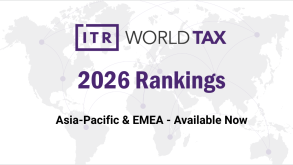For US international tax practitioners, an inversion is generally understood to be a transaction whereby a foreign corporation acquires all of the stock (shares) or assets of a US corporation, typically for the purposes of removing such business from the reach of the US corporate tax system. Unlike many other jurisdictions that tax corporations on a territorial basis, the US taxes on a worldwide basis, that is US corporations are taxed on their global income, whether derived from operations in the US or other jurisdictions. Such taxes may be offset through the application of credits for the taxes paid in foreign jurisdictions. However, the foreign tax credit system is exceedingly complex and often results in US corporations being subject to a higher effective tax rate than their foreign competitors.
Given the actual or perceived inefficiency of the US tax system, many US multinational corporations (MNCs) have explored alternatives for re-domiciling in a jurisdiction with a more favourable tax regime. Such inversions are subject to a great deal of scrutiny in a politically charged atmosphere. To protect the US corporate tax base, Congress and the Internal Revenue Service (IRS) have responded with rules and regulations designed to make inversions costly, and in certain cases effectively impossible, to execute.
Brief history of US anti-inversion laws
As was the case with the Trojan War, the beginning of the IRS' battle against inversion transactions may be directly traced to Helen of Troy. In 1993, Helen of Troy was a publicly traded cosmetics company, incorporated in the US, which engaged in an inversion transaction whereby a newly formed Bermuda shell corporation became the parent of the historic US corporation. At the time, the transaction was completely tax-free to both Helen of Troy and its public shareholders. The IRS viewed this deal as a completely tax-motivated transaction having the sole purpose of avoiding US taxes, and in response, issued a notice that on a prospective basis, US shareholders of a US corporation would be subject to taxation in certain inversion transactions. This notice was followed with the issuance of the first comprehensive set of anti-inversion guidance in 1996. However, because both the notice and the 1996 regulations only imposed taxation on the US shareholders of the inverted corporation, these provisions were largely ineffective in preventing publicly traded US MNCs from engaging in inversion transactions. Congress responded in 2004 with the enactment of section 7874 and section 4985. These anti-inversion provisions are directed at the taxation of the US corporation and its insiders (officers, directors, significant shareholders), respectively. Over the last few years, Congress and the IRS have issued additional guidance under section 7874, which has significantly limited taxpayers' ability to invert a US MNC.
Summary of anti-inversion provisions
The current US anti-inversion regime is designed to deter inversions by subjecting the US target corporation, its shareholders and its insiders to taxation, or in the extreme case, to treat the foreign acquiring corporation as if it were a US corporation for all US tax purposes. To achieve a completely tax-free inversion transaction, taxpayers must negotiate each of these obstacles.
Section 367(a)
Final regulations under section 367(a) were issued in 1996, providing the first comprehensive set of US anti-inversion rules. These rules are slightly more favourable than those originally proposed in Notice 94-96, as they permit the US shareholders of the US target corporation to receive up to 50% of the foreign acquiring corporation's equity (measured by voting power and value) in the exchange, provided certain other requirements are also satisfied. If this ownership limitation is satisfied, then except as provided in section 367(a)(5), the US transferors are not subject to taxation under section 367(a)(1) if the domestic corporation complies with certain reporting requirements and the following additional conditions are satisfied:
50% or less of the total voting power and value of the stock of the foreign acquiring corporation is owned after the transfer by US persons that are either officers, directors or 5% shareholders of the US target corporation.
Either (a) the US transferor is not a 5% shareholder of the foreign corporation or (b) the US transferor enters into a five-year gain recognition agreement regarding the US target corporation stock it exchanged.
The active trade or business test is satisfied.
The limitations imposed by these regulations would have caused the inversion transaction undertaken by Helen of Troy to be fully taxable to its US shareholders. However, because taxable US persons may comprise a minority of the shareholders of a publicly traded US MNC, or such shareholders may otherwise have little gain in their shares of the US MNC, these rules were not an effective deterrent to inversion transactions.
Section 7874
Spurred to action following a series of high profile inversions occurring in the late 1990s and early 2000s, in 2004 Congress enacted section 7874 to introduce a more effective deterrent to inversion transactions. Section 7874 applies to certain transactions involving corporations and partnerships, including transactions whereby (i) a foreign corporation acquires (directly or indirectly) substantially all of the properties held by a US corporation, (ii) the former shareholders of the US target own at least 80% (or 60%) of the stock of the foreign acquiring corporation by reason of holding stock in the US target and (iii) the expanded affiliated group (EAG) that includes the foreign acquiring corporation does not have "substantial business activities" in the foreign acquiring corporation's country of incorporation when compared with the total business activities of the expanded affiliated group. These tests are applied taking into account all transactions completed pursuant to a series of related transactions.
Section 7874 addresses two levels of inversion transaction. First, section 7874(a)(2)(B) provides that a foreign acquiring corporation is a "surrogate foreign corporation" to the extent the shareholders of the US target receive at least 60% of the stock of foreign corporation (measured either by voting power or value) in the transaction by reason of owning US target corporation stock, and the foreign corporation's EAG does not have substantial business activities in its country of incorporation. If a foreign corporation is a "surrogate foreign corporation," then section 7874(a)(1) provides, at a minimum, that certain gain recognised by the US target in the inversion transaction (as well as certain post-transaction income and gain) is taxable in full at the maximum corporate tax rate, without offset by losses, credits or any other tax attributes. Second, if the foreign corporation is a surrogate foreign corporation and the shareholders of the US target receive at least 80% (measured either by voting power or value) of the stock of the foreign corporation in the transaction by reason of owning US target corporation stock, then section 7874(a)(1) does not apply, but instead section 7874(b) provides that the foreign acquiring corporation will be treated as a US corporation for all US tax purposes.
"Substantially all" test
Little guidance is provided to determine whether "substantially all" of the assets of a US target corporation have been acquired for purposes of section 7874. Although the phrase "substantially all" has a well developed definition in the US tax-free reorganisation rules, such interpretations may not be appropriate in the inversion context, given the anti-abuse policy underlying section 7874. The regulations do provide some clarity, but principally in terms of measuring which assets should be treated as having been acquired by the foreign corporation, as opposed to what quantum of assets constitutes substantially all. For example, an acquisition of the stock of a domestic corporation is treated as an acquisition of a proportionate amount of such corporation's assets. As such, the typical inversion transaction in which 100% of the stock of a US corporation is transferred to a foreign corporation is treated as an acquisition of 100% of the US corporation's assets. In addition, the most recent amendments to the regulations clarify that a downstream merger of a US corporation into its foreign subsidiary is an acquisition of assets of a US corporation to which section 7874 should apply. On the other hand, the regulations provide that the acquisition of the stock of a foreign corporation with a US subsidiary corporation is not treated as an acquisition of the assets of the US subsidiary. Consequently, acquisitions of foreign target corporations with US subsidiaries generally do not implicate section 7874. Finally, the regulations also include some anti-abuse rules that prevent taxpayers from avoiding the scope of section 7874 by using multiple foreign acquiring entities.
Ownership test
The initial inquiry to be made under the ownership test is whether the former shareholders of the US target corporation received their stock in the foreign acquiring corporation by reason of their ownership of US target corporation stock. Consider the following example: an individual owns 100% of the stock of a US corporation having a value of $100x, as well as additional non-stock business assets having a value of $100x. If the individual contributes both the US corporation stock and the non-stock assets to a newly formed foreign corporation as part of an integrated plan, then only 50% of the stock of such foreign corporation is received by the individual "by reason of" the ownership of the US corporation stock, and section 7874 would not apply because neither the 60% nor 80% ownership thresholds has been reached.
Taxpayers must be wary that certain issuances of the foreign acquiring corporation's stock are disregarded for purposes of measuring ownership. Section 7874(c)(2)(B) states that stock of a foreign acquiring corporation is disregarded if it is either (i) held by a member of the EAG including the foreign acquiring corporation or (ii) sold in a public offering related to the acquisition of the US corporation. Therefore, certain attempts to dilute the ownership of the former shareholders of the US target are disregarded. Nevertheless, because the statutory provision regarding sales of foreign corporation stock only addressed stock sold in a public offering, many practitioners considered other stock issuances (such as a private placement) to fall outside the scope of this statutory kick-out rule. However, this perceived loophole was closed with the publication of Notice 2009-78, which provides that any stock of the foreign acquiring corporation that is issued in exchange for "nonqualified property" in a transaction related to the acquisition is not taken into account in measuring ownership. Notice 2009-78 defines nonqualified property as: (i) cash or cash equivalents, (ii) marketable securities or (iii) any other property acquired with a principal purpose of avoiding the purposes of section 7874. Even with these limitations, following the 2012 changes to the "substantial business activities" test (discussed below), most efforts to avoid the application of section 7874 will likely focus on the ownership test.
Substantial business activities test
Section 7874 does not apply to an inversion if the foreign acquiring corporation has "substantial business activities" in the jurisdiction where it is incorporated when compared with the overall activities of its EAG. Though the legislative history is not clear, presumably this test was included in section 7874 to distinguish a business-motivated transaction from those inversions that are solely tax-motivated. At any rate, in the first set of regulations applying this test, the determination of whether the foreign corporation satisfied the substantial business activities test was to be made based on all the facts and circumstances, though a safe harbour provision was also included. Under the safe harbour, the test was satisfied if: (i) after the acquisition, the group employees based in the foreign country accounted for at least 10% (by headcount and compensation) of total group employees; (ii) after the acquisition, the total value of the group assets located in the foreign country represented at least 10% of the total value of all group assets; and (iii) during a 12-month testing period, the group sales made in the foreign country accounted for at least 10% of total group sales.
In 2009, the first set of temporary regulations was replaced with a new set of temporary regulations in which the 10% safe harbour was removed, leaving the determination to be made solely on the basis of all the facts and circumstances. This left taxpayers with a considerable amount of uncertainty as to whether a particular transaction satisfied the requirement, and commentators suggested that perhaps a revised safe harbour would be appropriate. In June 2012 the IRS and Treasury Department responded, finalising the bulk of the temporary regulations, but issuing a new set of temporary regulations focused solely on the substantial business activities test. These regulations reversed the approach of the temporary section 7874 regulations – instead of making the determination based on applicable facts and circumstances, these regulations implement a new "bright line" test that must be met to satisfy the requirement. This bright line test is similar to the former safe harbour in that it also focuses on the group assets, group employees and group sales, but it has raised the bar to a 25% threshold, rather than the 10% standard under the safe harbour. Moreover, the new regulations tighten the application of the three-pronged test, limiting the types of assets, employees and income that satisfy each requirement. Consequently, while taxpayers have been given the certainty they sought following the repeal of the previous safe harbour, the bright line requirements are so stringent, it will be extremely difficult for most transactions to qualify under the new standard.
Section 4985
The final tool available to Congress to limit inversions is the excise tax imposed under section 4985, which applies to specified holders of stock-based compensation. The tax is imposed on a "disqualified individual" of an "expatriated corporation," but only if a gain is recognised, in whole or in part, by any shareholder as a result of the inversion transaction. A "disqualified individual" is generally an insider of the corporation, while an expatriated corporation has the same meaning as in section 7874(a)(2) (that is a domestic target acquired in a 60% inversion). For those persons subject to the provision, an excise tax is imposed (at a rate of 15%) on the value of the specified stock compensation held by or for the benefit of such person, including by a member of such person's family, during the 12-month period beginning on the date that is six months before the expatriation date. Generally speaking, such stock compensation is any payment (or right to payment) granted by the expatriated corporation in connection with the performance of services if the value of such payment is based on the value of stock in such corporation. By imposing an excise tax on the insiders, Congress tried to dissuade the corporation's decision makers from approving an inversion.
Implications
Inversion transactions are complex and potentially subject to several levels of tax. With the recent changes to the section 7874 regulations, the universe of viable inversion candidates has been significantly reduced. In the short term, it is likely that most inversion transactions will occur in connection with third-party acquisitions where the foreign acquirer is larger than the US target corporation and has an established foreign trade or business. Nevertheless, practitioners remain hopeful that the IRS will revise the latest formulation of the substantial business activities test.
The views reflected in this article are the views of the authors and do not necessarily reflect the views of the global Ernst & Young organisation or its member firms.
Brandon Hayes |
||

|
|
Senior Manager, Transaction advisory services – M&A Ernst & Young Washington, DC Tel: +1 202 327 6498 Fax: +1 202 327 6720 Mobile fax: +1 866 601 1126 Email: brandon.hayes@ey.com Brandon Hayes is a senior manager in the national tax M&A group, transaction advisory services practice, based in Washington, D.C. He advises US multinational corporations and foreign corporations on corporate tax issues, with a focus on spinoffs and cross-border transactions. Brandon is a frequent speaker at seminars and conferences on corporate and cross-border tax matters, and he has authored a number of articles for various tax journals and publications. Before joining Ernst & Young, Brandon was assistant tax counsel at Tyco International. He has a B.S. and J.D. from The University of Alabama, and an LL.M. in taxation from New York University School of Law. |









